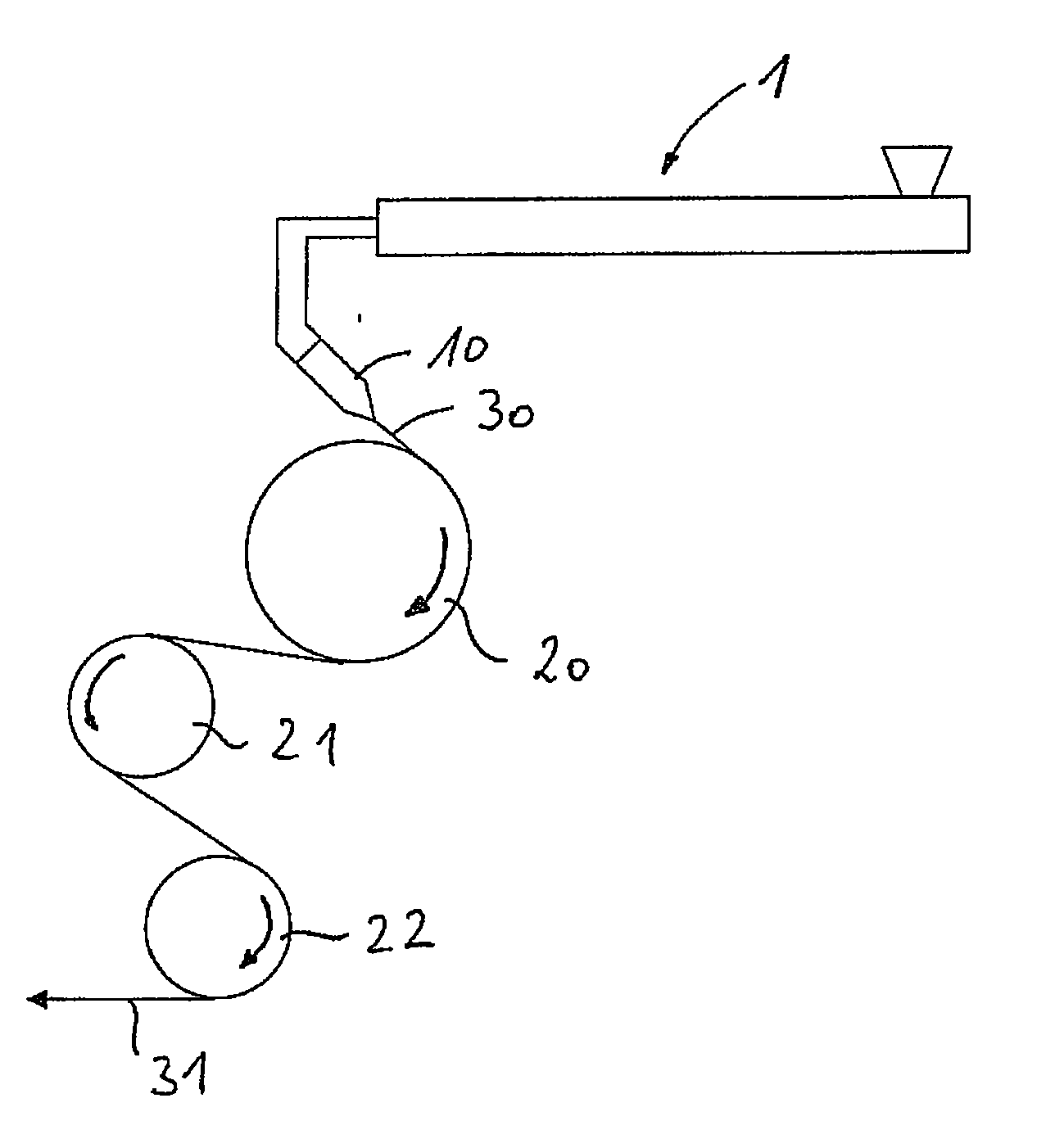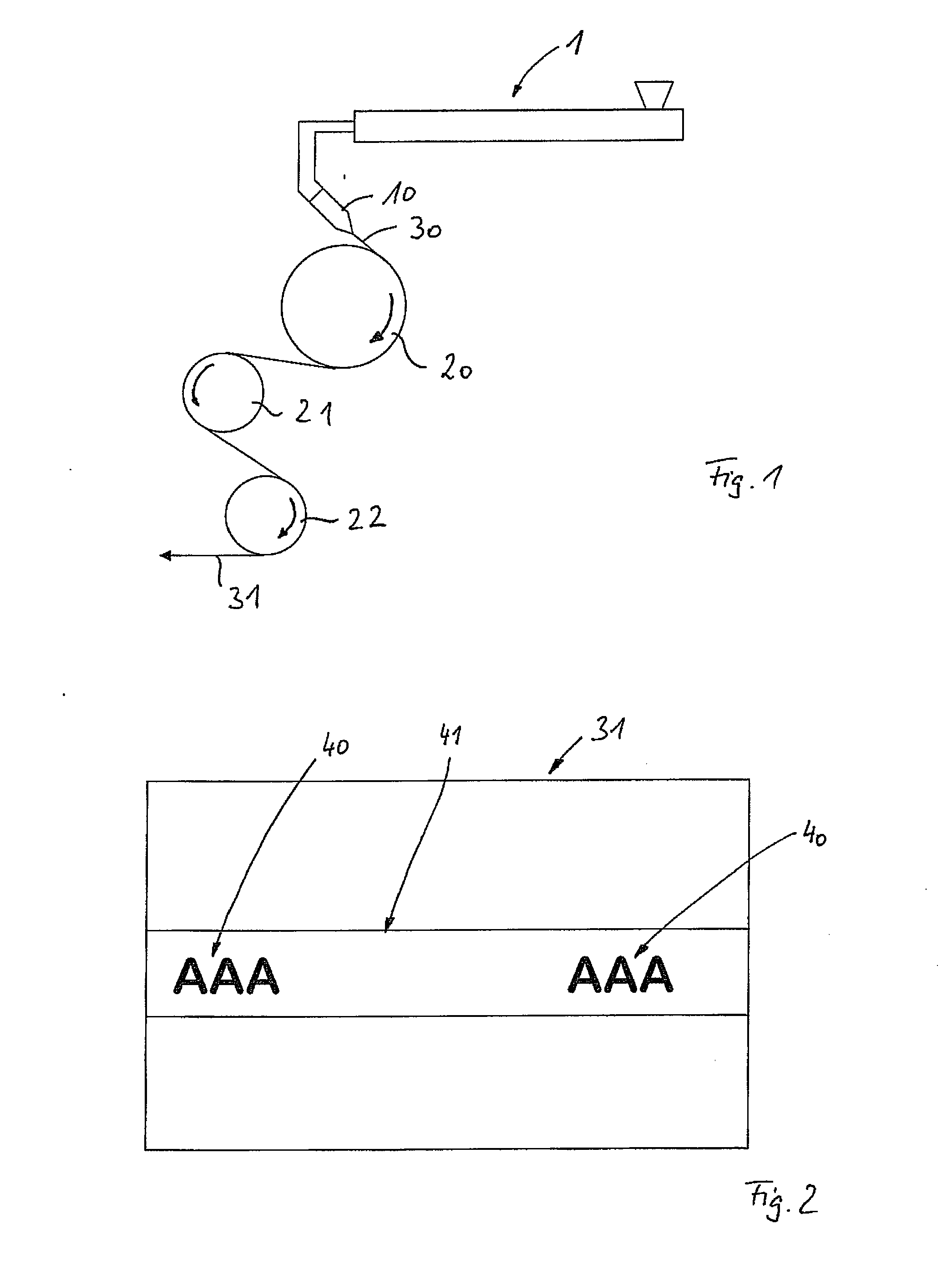Method and apparatus for manufacturing a film with markings
a technology of film and markings, applied in the direction of dough extruders, manufacturing tools, dough shaping machines, etc., can solve the problems of printing difficulties, inks that do not by default have the temperature resistance required, and printing on films using the known methods is always particularly complex
- Summary
- Abstract
- Description
- Claims
- Application Information
AI Technical Summary
Benefits of technology
Problems solved by technology
Method used
Image
Examples
Embodiment Construction
[0031]FIG. 1 shows the method and apparatus for manufacturing a film, which has markings, as shown in FIG. 2.
[0032]In this embodiment of this invention the film 31, for example, has continuous markings in the form of an uninterrupted bar 41, for example with a slightly opaque appearance on the otherwise transparent film and with regularly repeating inscriptions 40 on it.
[0033]In order to manufacture such a film, at least one extruder 1 is used, in which the thermoplastic plastic being used is transformed in an intrinsically known manner into a melt that then emerges in the form of a melt web 30 from an extrusion die 10 situated or positioned downstream of the extruder 1 and is laid against a first cooling roller 20. The cooling roller 20 is temperature-controlled and is driven in a rotary fashion in the rotation direction indicated by the arrows. With the cooled surface of the cooling roller 20 and the existing temperature gradients relative to the melt web 30 that is laid against i...
PUM
| Property | Measurement | Unit |
|---|---|---|
| thermal conductivity | aaaaa | aaaaa |
| colors | aaaaa | aaaaa |
| color | aaaaa | aaaaa |
Abstract
Description
Claims
Application Information
 Login to View More
Login to View More - R&D
- Intellectual Property
- Life Sciences
- Materials
- Tech Scout
- Unparalleled Data Quality
- Higher Quality Content
- 60% Fewer Hallucinations
Browse by: Latest US Patents, China's latest patents, Technical Efficacy Thesaurus, Application Domain, Technology Topic, Popular Technical Reports.
© 2025 PatSnap. All rights reserved.Legal|Privacy policy|Modern Slavery Act Transparency Statement|Sitemap|About US| Contact US: help@patsnap.com


